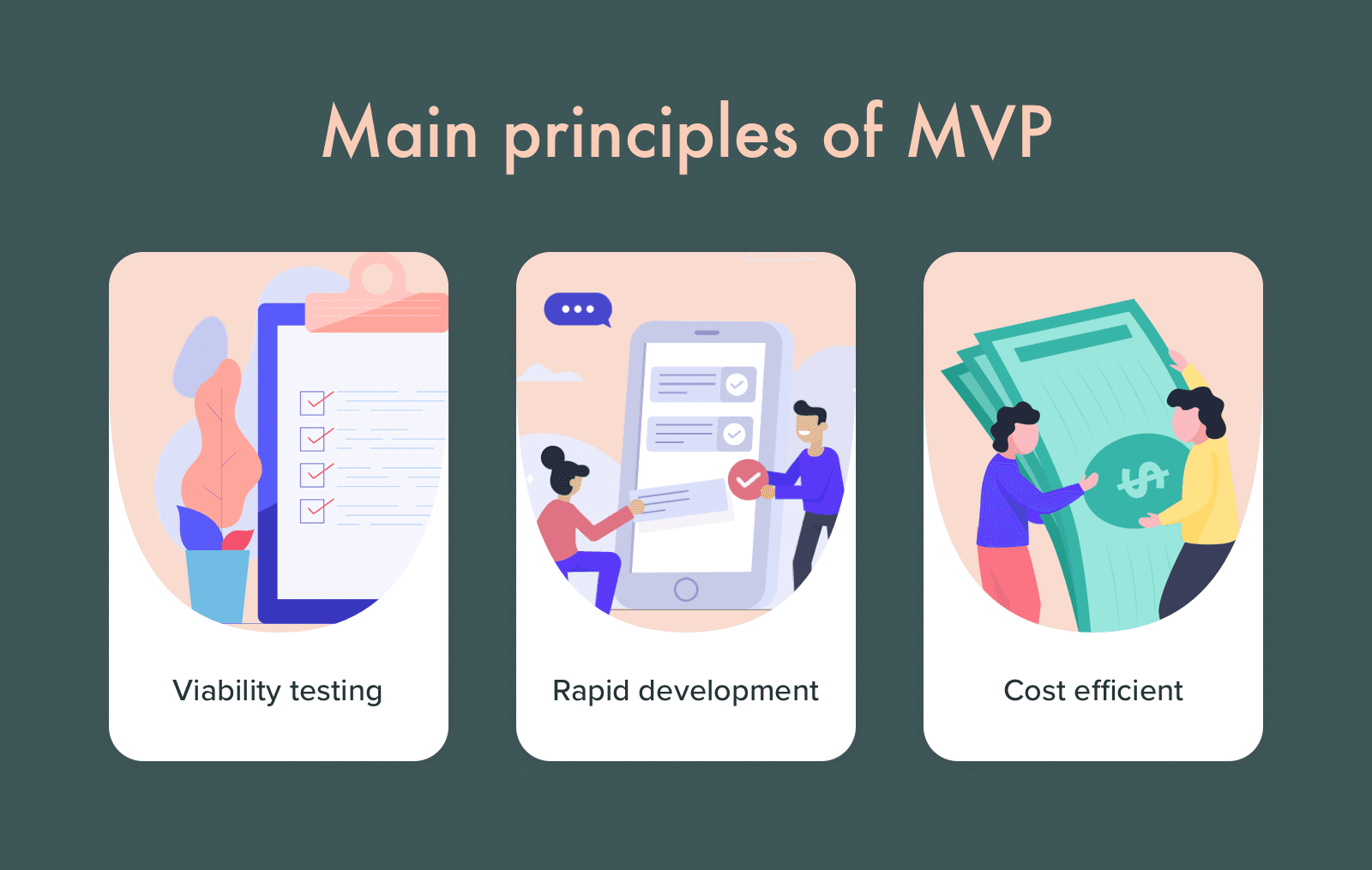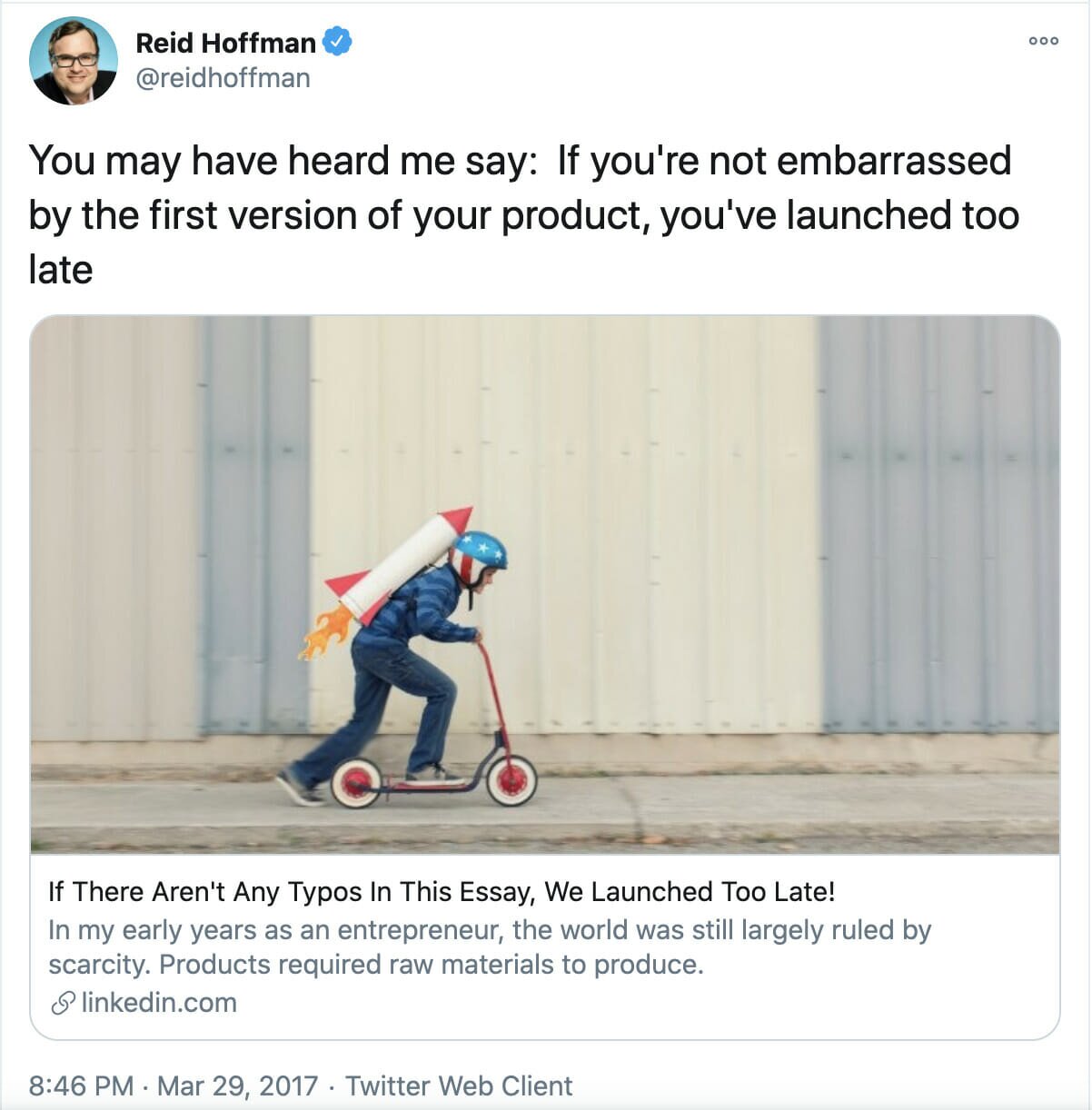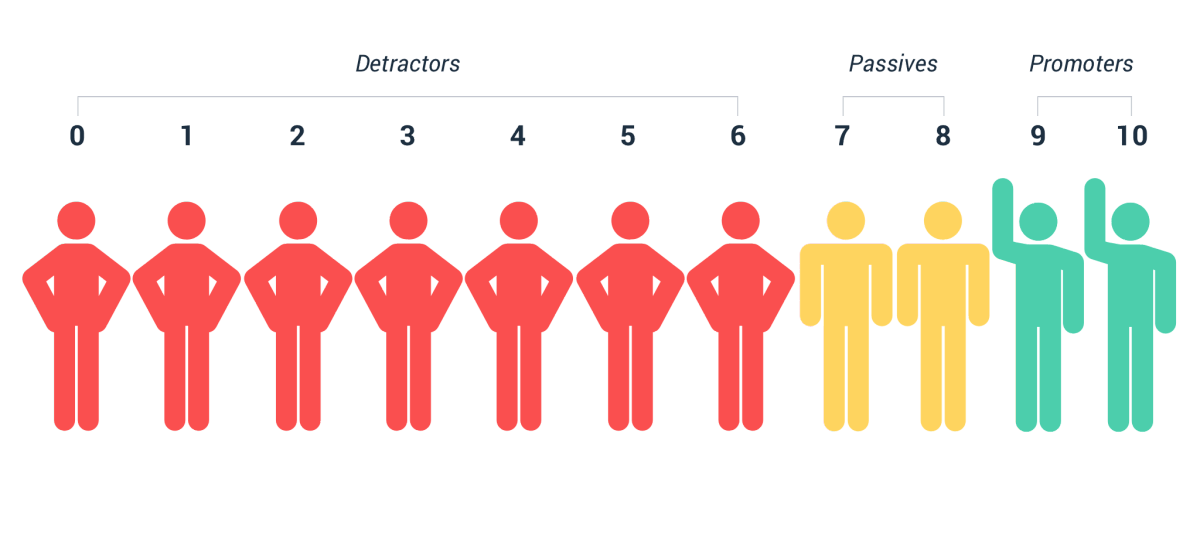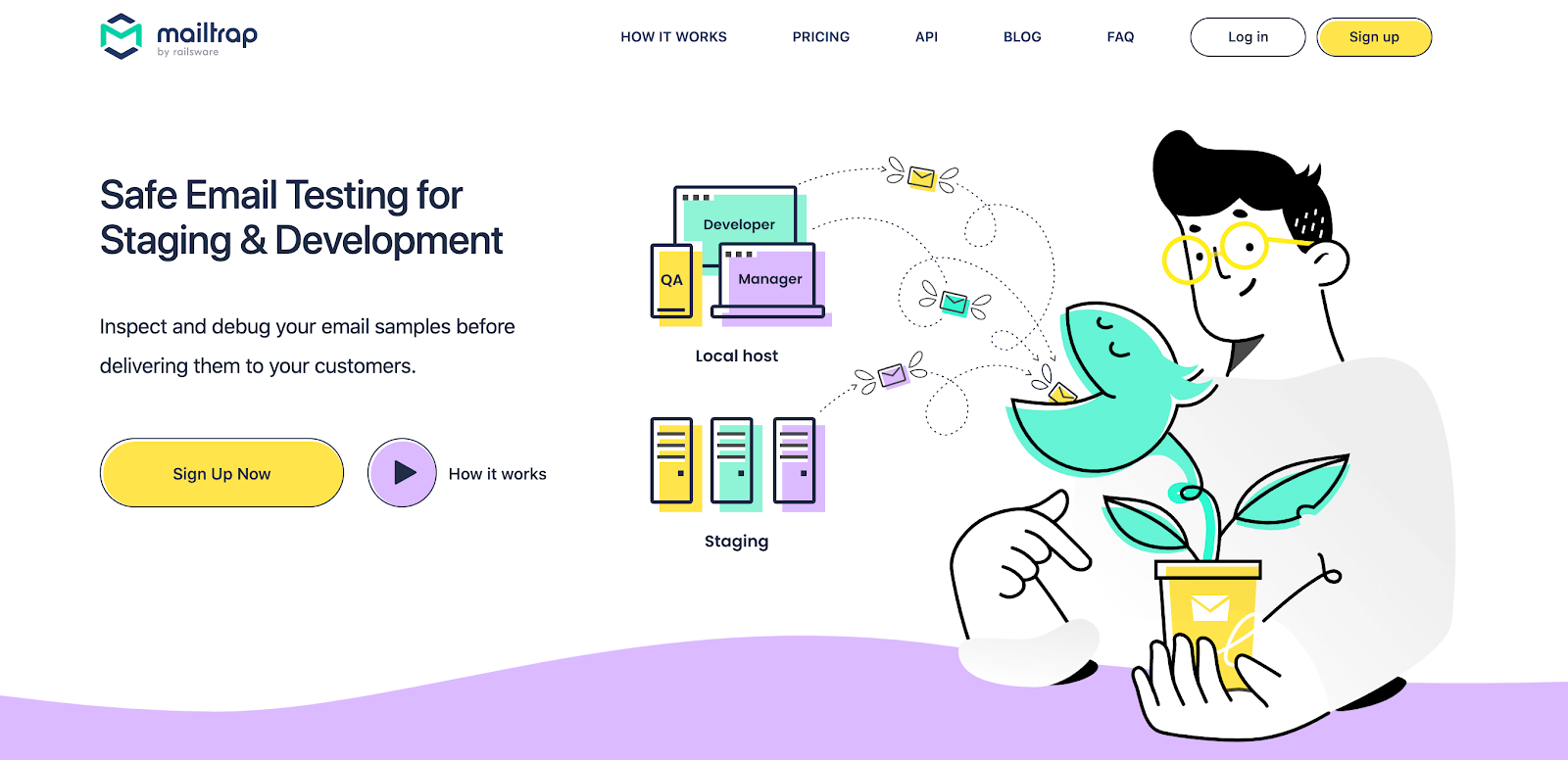
The goals of a minimum viable product are centred around idea validation and execution, learning, experiments, and ways of minimizing the effort to bring a meaningful new product to market. For the majority of product owners, having an MVP is not a question at all, while some are still skeptical about spending time on this concept.
The following article will try to convince the latter group of the benefits of MVPs, while the first cohort can reconsider approaches to building MVPs.
MVP: Goals and values
I bet you've used Airbnb, and posted tweets while listening to your favorite albums on Spotify. This scene is filled with MVPs. Enormously successful ones.
But when you step back, you can start to see a purpose behind each of these MVPs (hint: it wasn’t necessarily to build the product you’re using today, but to establish if the product was feasible & desirable!). For instance, Airbnb started with the intent of making an accommodation alternative for hotels.
As a rule, MVPs resonate with a few key purposes:
- Solution seeking. Chesky and Gebbia, the founders of Airbnb, faced a lack of available hotels in the area. They started thinking about a solution. This is an iconic duo: you have a problem, and you want to find a solution. This one is among the fundamental purposes of an MVP.
- Hypothesis testing. People would share a ride on a private vehicle to save time and money. Sounds like a hypothesis that needs to be tested, right? And you already know: it was tested. The MVP succeeded. With this idea in mind, Camp and Kapernick created Uber. To practically evaluate a hypothesis is also a core aim of many MVPs.
- Essence delivery. The key idea of Nick Swinmurn was to sell shoes online, so people would always have a needed pair without searching for it in stores. This is the story of Zappos. But Nick showed the nature of this service to the user, while in practice, he did all the routine by himself: he searched for the chosen shoes and delivered them to customers. In this way, he sold the essence of his service to the people. This is an inherited purpose of an MVP, and you may not need a developed solution for a start.
- Improve product. Mainly, Spotify did just one thing – legal music streaming. Now, it's a developed service with lots of additional features: from personalized playlists to notifications about upcoming events. It started as an MVP with the intention of testing and improving the product. Users’ feedback, own experience, and competitors’ reaction to your MVP will help in product improvement.
Obviously, all these four significant purposes are intertwined. They supplement each other. Based on them, business owners get a set of benefits if they consider building an MVP.
Business concept test
You've got the point already, right? Ultimately, MVPs are about complex testing of your product. This is a key value you'll obtain. With an MVP, you can assess a business concept carefully and in a realistic environment, and obtain great insights into further product development.
Investment attraction
If you're looking for funding, it's much easier to convince investors when you have a "real" implementation of your idea, a ready-to-use solution. Presenting an MVP to the stakeholders will increase the chances of successful funding. This happened to Buffer – being an MVP, it effortlessly raised $120,000 of investment in 2011.
Cost reduction
The faster you present your product to users, the sooner you can think of ROI. When speaking about web development, the faster launch of an initial product potentially means fewer development costs. You won't spend all your money on building something that won't work, and you'll test your hypotheses with the minimum needed amount of resources.
Demand analysis
Your MVP is on the market. What's next? Analyze and collect all the possible data. As Jeff Skinner highlights, how much people need your solution and how users interact with your product are the most important metrics. An MVP opens the door to the evaluation of market demand and consumer preferences, which then allows you to grasp your product's viability and positioning.
Product “polishment”
Receiving customer feedback and (judiciously!) checking-in on your competitors gives you a chance to improve the UX/UI of your product. If you want to stay competitive & actually create a lasting product, you have to be constantly thinking about how to refine and polish what you’ve built. The earlier your product is gathering feedback, the earlier you’ll be able to identify the most impactful ways you can polish your solution and scale it.

Types of MVPs
While there are dozens of MVP “types”, we need to highlight two major groups early on – low-fidelity and high-fidelity MVPs.
A low-fidelity MVP emphasizes the research of users' problems and existing solutions. A high-fidelity group is about product growth and feedback from its early adopters.
Rather than diving deeper into subtypes, let’s divide MVPs based on their essence:
Hypothesis-centric
You have an idea and are trying to validate it. You'll sell it later. This is a classical approach that Eric Ries successfully described in his book.
You can visualize your idea like Dropbox did, or use a crowdfunding platform to gather money as Pebble.
Landing pages, ad campaigns, blogs, explanatory videos are examples of an MVP exploring the idea foremost. Many startups go with this approach due to its almost effortless implementation.
Model-centric
You make a mockup and show it to the users, develop it in real-time, with the goal of validating your business or operational models. There are a lot of approaches to this kind of MVP, so I’ll just highlight a few key or common options.
You can go with a Concierge type – where a part of ultimately-automated actions are initially done by humans. Facebook did it at the start, when each new member was accepted manually, and Airbnb used a similar approach with the listings in their super simple initial app.
If you want a process to appear fully automated right from the start, this is sometimes also called the Wizard of Oz approach. In this situation, the fact that humans are forming part of the product infrastructure is obscured from the user. If the model is validated, then you can actively work to automate the process.
Alternatively, find one technology and combine it with another, make the integration valid and effective. This is a Piecemeal approach. Groupon developed as a piecemeal MVP, a platform connecting customers with local businesses. Andrew Mason, a Groupon founder, got those piecemeals and united them in one successful marketplace.
Feature-centric
This is a simple yet effective approach. Yes, it's real to build an MVP focused on one function only. Of course, your product should do this single feature superbly, as Buffer did with Twitter scheduling.
To know more about the (many!) subtypes of MVPs, feel free to check this short video guide.
A 4-step approach to building MVPs
Let's deconstruct the process of building an MVP into straightforward actions. Everyone’s approach will vary, but you can break the process down into just four steps from nothing to a-ready-to-present MVP.
Step 1. Preparation
This is an unskippable and fundamental step. You must do thorough research to evaluate your idea, market, target audience, and more. Without creating an evidence base, you can waste your time on making a solution to a non-existent problem.
Correspondingly, your research should focus on problem-solution flow. For this aim, it's convenient to use the Product-Market Fit approach. It'll assist you to figure out three critical questions:
- What problem will your MVP solve?
- Who is your target audience?
- Are there any solution alternatives?
Proceeding with these inquiries, you'll get a full picture: who your users and competitors are; what your target market is; how deep it's saturated with solutions, whether it's mature or developing, etc. From this first step, you'll have a path to move on.
However, many would argue that MVPs are about rapidity – “no time for research, let's launch!” – perhaps citing Reid Hoffman's regular maxim:

It's debatable, and the reality is obviously “it depends”. Moving fast doesn’t mean “completely skip the research phase”, it just means don’t get weighed down in polish and non-critical ambiguity. You could win a bit of time and present, say, your mobile or web app faster, but will your "embarrassing release" survive being pushed into a market with no research?
Suffice it to say, I highly recommend doing a deep and careful analysis before you kick off your MVP.
Step 2. Identification
This step begins with what Alexander Osterwald, in his The Business Model Ontology, has identified as value proposition canvas. You have to understand (or assume, at least) the value of your MVP.
Using the data collected at the previous stage, this approach is key to identifying what benefits and painkillers your product can bring to users and in the market. Respectively, you'll be able to choose the most suitable type of MVP.
At this stage, you also need to work on the identification of key feature(s) your solution will obtain. This is both a starting point and a long-term product vision.
I encourage you to work on feature prioritization. If done right, you'll have a strategy to present and develop your solution. At Railsware, we did that with Mailtrap.
Mailtrap started as a single-feature MVP – a solution to email testing without spamming real users.
As Sergey Korolev, Railsware Managing Director, recalls:
The idea of Mailtrap appeared while building customer products. When we were starting new projects, we used it as an email testing service. We identified the value for users based on the pain we experienced ourselves. Owing to correct value identification and feature prioritization, Mailtrap has grown into a multi-feature product.
Step 3. Perception
When developing an MVP, you shouldn't forget about long-term perspectives. Many of the MVPs that we mentioned above appeared from a raw idea that evolved.
Start developing a roadmap in parallel to the development of an MVP. I'd help if you think of how users will perceive your solution with time, as well as what features would come next.
Create a product backlog. Roman Pichler, in his book Agile Product Management with Scrum, highlights:
The first thing we have to do is to look ahead two to three sprints to understand which product backlog items are likely to be worked on.
A product backlog is never finished, it's changing, it's about future steps. Use item prioritization and decompose your story map:
- Developmental goals
- Future actions
- User feedback
- Low-level tasks
Overall, reviewing your backlog and updating your map are the way to understand future upgrades of your product.
Step 4. Evaluation
All the preparation stages are over. You launched your MVP. It's time to collect feedback and evaluate the solution you offered to people. For this purpose, we recommend focusing on three key MVP metrics:
Feedback
This is a must. Start collecting feedback since the first day of product launch. How?
Here are some classical and still effective ways:
- Follow user opinions on social media
- Check product reviews on listings
- Evaluate customer satisfaction
- Customer Development interviews
- Feedback landing pages
Separately, consider NPS activities as a part of feedback collection. Ask your users how they enjoy your product directly. However, keep in mind that NPS of an MVP may be a-priori lower if using the standard scale (your product is an early-stage work-in-progress, after all). So, to account for that skew, you could update your scoring so that detractors are 0-3, and if you have 3+, it's an awesome start.

Active users
This metric can be challenging to track due to product specifics. The main point of it is to understand whether the number of users grows or decreases. In the latter case, you have to work on customer engagement, feature prioritization, product updates, etc.
MRR
For startups, it's critical to track finances on a short-term scale. Therefore, you have to know how your MVP is performing in terms of money generation (Monthly Recurring Revenue). Check this guide to know more about MRR.
Apart from these metrics, you can dive into the deep evaluation and track activation numbers, churn rates, growth progress, and more.
Final Words
Is building an MVP always an effortless and successful procedure? Nope. But it's definitely a reasonable, cost-effective, promising move to try.
Knowing the core approaches that we covered in this guide, you have an opportunity to contemplate on your own tactic, choose an MVP type, and prioritize your actions. Eventually, you'll be able to understand whether your product is ambitious or a new strategy should be applied.








